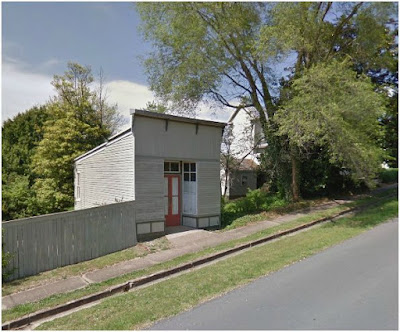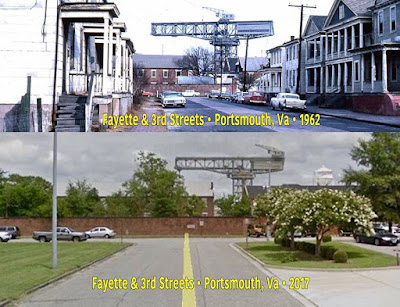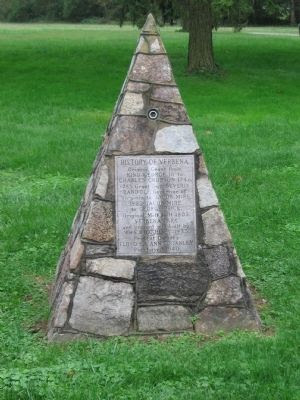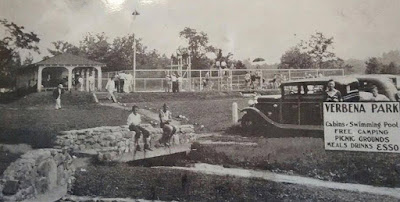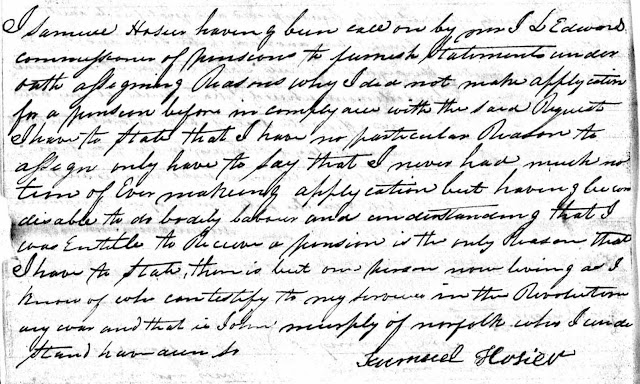A stable home to grow up in is a gift that should not be
underestimated. My husband’s maternal grandfather was a mean old so-n-so when I
met him. Family and friends chalked his mean streak up to alcoholism and
possibly what today we would call “PTSD” from his experience in World War I.
However, his childhood was nothing to envy.
Russell Dayton Kohne was the first child of Lemuel James
Kohne and Rebecca Funkhouser. He was born 4 November 1894 in the Lost River
community of Hardy County, West Virginia. Russ had two sisters, Laura born in
1897 and Lena born in 1899.
Russ never appeared in a census record with his parents.
In 1900, he was living in the household of his paternal grandfather Peter
Kohne. If there was any stability in Russ’s life, it was in the hands of his father’s
brother Simon Thomas Jackson Kohne. OR Simon Thomas Jackson Chrisman. Yeeah,
there’s a story.
The Chrismans and Kohnes
In 1870, Russ’s grandfather Peter Kohne was only 26. He
and his wife Catherine Delawder Kohne had two children, James Lemuel and
Martha. Living with them was a housekeeper, 26-year old Ellen Chrisman.
Catherine died in 1876 paving the way for Ellen Chrisman
to become the official new wife. In 1880, the Kohne household consisted of
Peter and Elenora, Lemuel (13), Martha (9), Sarah (8), and Charles who was just
an infant born in December 1879. In addition were the Chrisman children Elenora
(9), Permelia (5), Rauser (4), and S.T.J. - aka Jackson (3), all of whom were identified as
step-children.
 |
| Household of Peter Kohne Lost City Hardy Co WV 1880 |
In 1900, the “step” was no longer in use, and the
children remaining in Peter and Ellenora’s home were enumerated as full-fledged
children. At the risk of being labeled “cynical,” I suspect the Chrisman
children deserved the Kohne surname. Back in 1880, there was no sign of a “Mr.
Chrisman.” Their ages seem awwwfully suspicious.
But I Digress
The daily life of Russ Kohne is not known, but a few
report cards were saved, for whatever reason. His grades were average. His “deportment”
was only “fairly good.” His attendance was poor.
What interested me about the report cards is that they
were signed not by his parents or even his grandparents. They were signed by
his father’s brother Jackson. In census after census, Jackson seemed to be the
stabilizing force. Even when he was head of household, there were nieces and
nephews in his care.
 |
| Love the remarks from the teacher: Should attend school regular and persevere |
Where Were Russ’s Parents?
In 1900 when Russ was being raised by his uncle Jackson
and grandfather, a sister Laura was living nearby with Peter’s brother Daniel Kohne
and wife Lydia. Russ’s mother Rebecca was working as a servant to widower James
Miller and his two young children. With Rebecca was her 1-year old daughter
Lena.
As for Lemuel, he was in Moorefield, West Virginia, enumerated
in the household of Charles and Alice Pashel and their six children ranging in
age from 11 to 23. Lemuel and one other man were there as PRISONERS, of all
things.
Why would prisoners be living in a private home? With
children in the household, surely the crime must have been minor. Working off a
debt due to theft maybe?
Oh Heck No
For years, my husband’s family has wondered about their
great-grandfather’s crime. With more newspapers coming online, I finally have
an answer for them, and boy oh boy is it a doozy: Murder.
Lemuel shot and killed his neighbor Isaac John Sager. The
reason? Dispute over their property line.
Yeah, that’s the kind of temper Russ had too, but he never murdered anybody.
None of the news articles gave much detail about the
killing. In fact, most sounded much like this personals column out of Mathias, West Virginia, that appeared across the state line in
the Shenandoah Herald in March 1901:
 |
| Russ and Hattie 50th Anniversary 1967 |
Amy Johnson Crow continues to challenge genealogy
bloggers and non-bloggers alike to think about our ancestors and share a story
or photo about them. The challenge is “52 Ancestors in 52 Weeks.”
Wendy
© 2019, Wendy Mathias. All rights reserved.

















